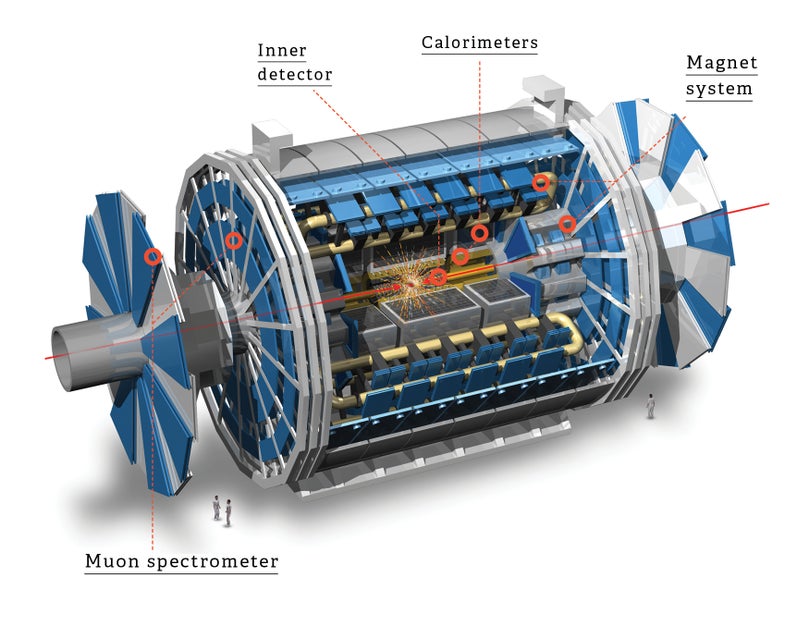How It Works: The Large Hadron Collider
To chaotically combine particles, you need a lot of space ... and a lot of power


Inside The Large Hadron Collider
The world’s most powerful particle accelerator, the Large Hadron Collider (LHC), famously upended physics with the discovery of the long-sought Higgs boson in 2012. But it was only operating at half power. Since then, the LHC has undergone a massive upgrade, and this spring, it will ramp back up for a second run at near full strength. For the next three years, more than 12,000 scientists will use the LHC to explore the deepest and weirdest questions in particle physics. What they will find–new particles, forces, or even dimensions–is anyone’s guess.
How It Works

ATLAS Detector
1. Acceleration: The collider occupies a nearly 17-mile circular tunnel. Two proton beams travel around the ring in opposite directions, racing through tubes kept at an ultrahigh vacuum and guided by superconducting magnets chilled to a temperature colder than that of outer space. Moving at near light speed, the protons make 11,245 circuits per second.
2. Collision: The beams cross in four main detectors, where particles collide 800 million times per second. During the upcoming run, those collisions will produce an unprecedented 13 tera electron volts. That’s 13 times the energy of a mosquito in motion, but squeezed into a space a trillion times smaller—a density similar to moments after the big bang.
3. Creation: As Einstein theorized in E=mc2, energy can be converted into mass (and vice versa). And so the energy of two protons colliding can combine and convert into massive new particles, including a top quark—the heaviest subatomic particle ever observed. Because they’re unstable, these particles quickly decay into a number of new ones.
4. Detection: As these secondary particles fly away from the collision point, the detectors measure their properties—including positions in space, energy, momentum, mass, and charge. Physicists use this information to deduce the identity of the particles created at the moment of collision and scour the data for anomalies that may indicate something entirely new.
ATLAS Detector

Atlas Detector
At 28,750 cubic meters, ATLAS is the largest-volume particle detector ever constructed, and it was designed to do the widest range of experiments. When particles collide, four components record the result: the inner detector measures momentum; calorimeters measure energy; the muon spectrometer tracks muons (a collision byproduct); and the magnet system bends charged particles. Because the data rate is equivalent to 50 billion simultaneous phone calls, it also has systems to decide which data should be recorded or ignored.
This article was originally published in the April 2015 issue of Popular Science, as part of our annual How It Works package.